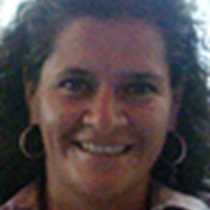Floreana Island
After a smooth navigation last night, we woke up this morning at sunrise to go to Post Office Bay, on the northern coast of the Island also known as Charles or Santa Maria. A very pleasant morning breeze, very typical for this time of year, kept us company on today’s expedition. The garua which is characterized by a fine drizzle has already taken over the inhabited islands of the archipelago.
Floreana, which is an inhabited island, plays an interesting role in Darwin’s writings in The Voyage of the Beagle. Back in 1835 when he visited the archipelago, by talking to the governor at the time, he realized something unusual was going on here… “The governor had made a comment that he could tell which island the tortoises came from just by looking at their carapace…”
Post Office Bay reminded us of the early visitors that used to get their provisions of goats, cattle and unfortunately Galápagos Giant Tortoises. The barrel was a meeting point where they exchanged news, letters and rum to celebrate their safe arrival to the southern seas.
Champion Islet is the peak of a submarine volcano. After breakfast, snorkelers explored the fascinating underwater world, a lot of action in the water. Schools of Creole fish, King Angel fish, yellow tailed Surgeonfish fish, territorial white tailed Damselfish, Mexican hogfish, Blue-chinned parrotfish, and needlefish greeted us as we jumped into the water. The non-snorkelers had the alternative of seeing the same fish but on board the glass bottom boat without getting wet. Everybody had a chance to get in contact with one of the largest marine reserves in the world.
After the snorkel, we went looking for the one of the famous bird species in the Galápagos, the Charles Mockingbird. Today, due to the presence of introduced species, not many of these rare birds survive. Champion Islet is one of only two little islets off the shore of Floreana where you can find them.
In the afternoon, the adventure continued with a group of kayakers that went paddling around Cormorant Point while the rest of our younger guests went to the beach for more swimming and snorkeling. As we ended our walk, Mother Nature showed us how crude survival is... a flock of frigate birds were attacking a nest of Pacific Green Sea Turtles. At least three hatchlings were taken. The birds, known for being expert flyers, had a strong advantage over the young sea turtles that were attacked even before they got out of the nests.
Natural Selection in action just saved us naturalists some work. By seeing it taking place in situ, we did not need to explain how it works!



